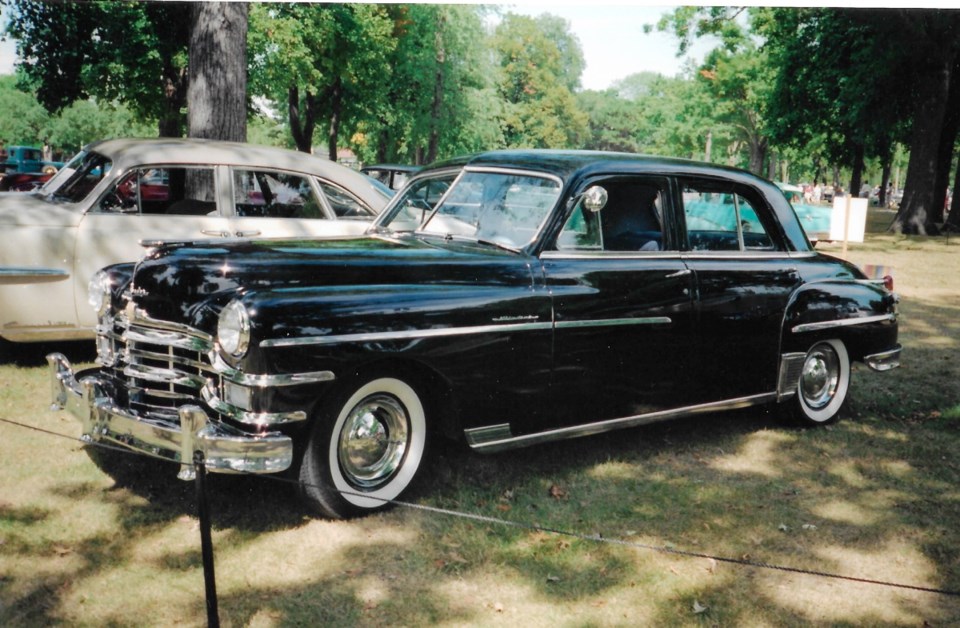When a tiny roadster with tall wire wheels began landing in North America from England after the Second World War it ignited a whole new type of motoring fun. It was called the MG TC and it became the quintessential sports car.
But while the TC was exciting to look at and drive, it still had 1930s technology. The evolutionary and more modern 1950 TD model improved on that with independent front suspension, a softer ride and more precise rack-and-pinion steering. Although its disc wheels were less dashing than the TC’s tall wires with knock-off hubs, they were more practical.
One man who became enamoured with the MG was Stanley Harold “Wackey” Arnolt. He liked it so much he wanted to sell it to others.
Arnolt had an interesting background. He graduated in mechanical engineering from the University of Wisconsin during the 1930s Depression when work was scarce.
Following a variety of jobs, but none that launched a career, he discovered that Waukeshaw Engine Co. of Waukeshaw, Wisconsin, was selling the rights to its small 1.0-litre, side-valve Sea-Mite marine engine.
It was used as auxiliary power for sailing yachts and the market had shrunk drastically during the Depression.
Arnolt could see the clouds of conflict gathering in Europe and felt sure the United States would eventually become involved.
His vision was prescient. When the U.S. entered the Second World War, triggered by Japan’s attack on Pearl Harbor, Hawaii, in 1941, Arnolt knew thousands of troops would soon be sent overseas by ship. And every ship would need powered lifeboats.
The entrepreneurial Arnolt landed lucrative contracts for his little engine as lifeboat power. He became wealthy, and when peace came he returned to his interest in automobiles.
Arnolt formed S.H.Arnolt Inc. to be the Chicago distributor for MG along with other English cars such as Morris and Riley.
He had a couple of reservations about the MG, however: its square 1930s styling and two passenger limitation. He thought he could improve the MG in both areas and expand its market significantly.
Arnolt’s car interest took him to the 1952 Turin Auto Show where he made the contact that brought him into automobile manufacturing.
One of the Turin displays featured two handsome little MG-based cars, a four passenger convertible and coupe by Italian coachbuilder Bertone.
The familiar MG grille, badge and taillamps immediately attracted MG enthusiast Arnolt. He loved the little cars and much to the surprise of Nuccio Bertone, Mr. Bertone’s son, the tall outgoing American ordered 100 coupes and 100 roadsters.
Bertone naturally was delighted because it was the lifeline his company needed. Arnolt was able to strike a deal with the MG Car Co. of Abingdon, Berkshire, to send running chassis to Bertone where the bodies were added. The Arnolt MG was a truly international project with English mechanicals, Italian body and American money and vision.
The Arnolt MG was a handsome car with its long hood, short tail and low envelope body riding on wire wheels. The coupe had a light airy feeling and the roadster had a very welcome easy-to-operate top. Best of all, for many MG enthusiasts, they carried four passengers.
Underneath it was pure MG TD with a 1.25 litre (with a 1.5 litre optional) inline, overhead valve, four-cylinder engine with twin SU carburetors.
Power went to the rear wheels through a four-speed manual, floor-shifted transmission with synchromesh on the top three gears. Suspension was front A-arms and coils and rear solid axle and leaf springs.
As expected for a car weighing close to the TD’s 907 kilograms, acceleration was about the same at zero to 97 kilometres per hour in 20 seconds.
Better aerodynamics brought top speed close to 145 km/h compared with the TD’s 129 (80).
The Arnolt MG was more luxuriously appointed than the TD, including wind-up windows and a more powerful heater.
The secondary gauge cluster was relocated from the middle of the dashboard to the left ahead of the driver where it was flanked by the tachometer and speedometer.
Arnolt priced the Arnold MG about $1,000 over the regular TD with the coupe at $2,995 and the roadster at $3,145. It didn’t seem excessive for attractive Italian styling and four seater convenience.
Although the original order was for 200 chassis, MG stopped supplying chassis and engines with the changeover to the 1954 MG TF. Thus only approximately 100 Arnolt MGs were produced during 1952 and ’53.
The Arnolt MG is a rare and stylish collectible that showed what the MG could have been had MG chosen to do so.
MG finally got around to more modern envelope styling with the 1956 MG A, but Bertone and Arnolt had showed the way years earlier, and some say better.



